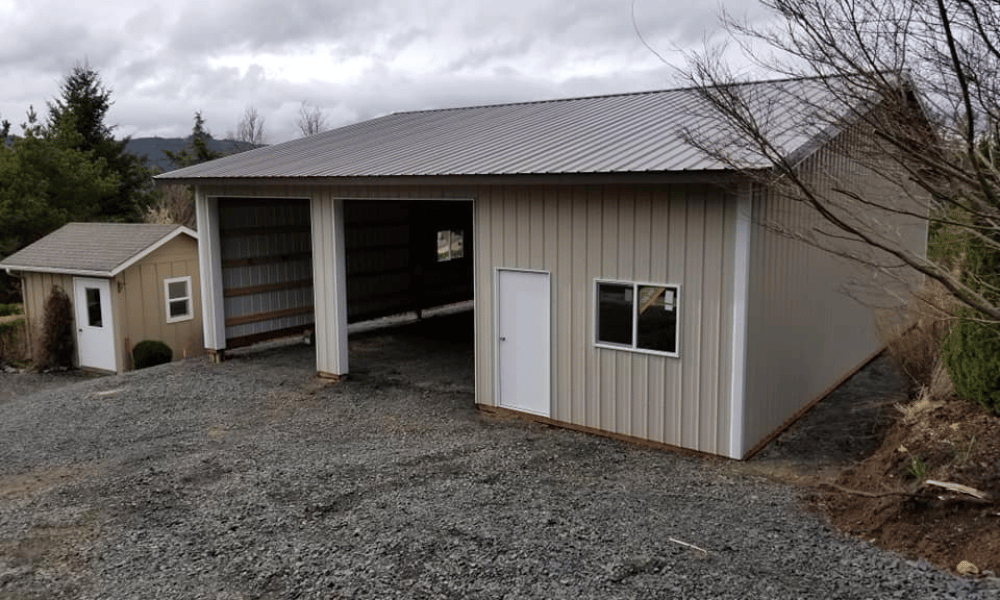Building your own shed can be an incredibly rewarding project. Not only does it give you a sense of accomplishment, but it also provides valuable storage space for your tools, gardening equipment, or hobbies. However, if you're new to construction or DIY projects, the thought of constructing a shed can feel overwhelming. But don’t worry! We’re here to guide you through the entire process every step of the way. So grab your coffee, sit back, and let’s dive into "Navigating through the Process of Constructing your Own Shed? Read This First!"
Why Build Your Own Shed?
The Benefits of DIY Construction
Building your own shed comes with numerous advantages:
Customization: You can tailor it to fit exactly what you need. Cost-Effective: You save on labor costs by doing it yourself. Skill Development: It’s a great opportunity to learn new skills. Satisfaction: There’s something special about seeing a project come to life that you’ve created with your own hands.Understanding Your Motivation
Before you start planning, think about why you want this shed in the first place. Is it for storage? A workshop? Or perhaps a cozy retreat for reading and relaxing? Whatever your reason might be, keep it at the forefront throughout this project.
Navigating through the Process of Constructing your Own Shed? Read This First!
Planning Your Shed
Creating a robust plan is crucial before you even think about picking up a hammer.
Choosing the Right Location
Where do you want to place your shed? Consider factors like sunlight exposure and accessibility.
- Sunlight Exposure: If you're storing plants or gardening tools, you'll want ample sunlight. Accessibility: Make sure it's easy to reach when you need something from inside.
Sizing Up Your Space
How big should your shed be? Measure out how much space you'll need for everything you plan to store.
- Use graph paper or design software to sketch out ideas. Think about vertical space; shelves can maximize storage without taking up too much floor area.
Materials Needed for Construction
Selecting Quality Materials
Not all materials are created equal! Here’s what you'll need:
- Wood (for framing): Look for treated lumber that can withstand weather conditions. Roofing Material: Asphalt shingles are popular due to their durability. Siding Options: Vinyl siding is low-maintenance and comes in various colors.
Tools Required
Here’s a handy checklist of tools that will make this project easier:
| Tool | Purpose | |--------------------|--------------------------------------------| | Circular Saw | For cutting wood | | Drill | For making holes and driving screws | | Level | To ensure everything is even | | Measuring Tape | For accurate measurements |
Designing Your Shed
Choosing a Style
What kind of aesthetic do you prefer?
Traditional vs Modern Designs
Your personal garage builders near Harrisburg style may lean towards rustic charm or sleek modern lines. Choose what resonates with you!
- Traditional designs often feature gable roofs and wooden siding. Modern designs might incorporate metal roofing and large windows.
Incorporating Functional Elements
Consider adding features like windows for natural light or hooks for hanging tools inside.
Obtaining Necessary Permits
Check Local Regulations
Before diving into construction, check with local authorities regarding permits required for building a shed in your area.

Consult local building codes online or contact city officials directly.
Foundation Choices
Types of Foundations
A solid foundation will prevent future problems with moisture and stability:
Concrete Slab Wood Skids Gravel BaseEach option has its pros and cons depending on budget and intended use.
Building Your Shed Step-by-Step
Step 1: Lay the Foundation
Start by preparing the ground where your shed will sit.
Clear debris from the area. Level the ground as needed. Lay down chosen foundation material (e.g., gravel).Step 2: Building the Frame
Constructing the frame involves creating walls that will support everything else:
Use treated lumber for durability. Assemble wall frames on flat ground before raising them into position.Step 3: Adding Roof Structure
The roof keeps everything safe from rain and snow:
Decide on roof style (gable is common). Use plywood sheathing topped with roofing material.Finishing Touches
Painting and Staining
Once built, give it some character! Paint or stain not only beautifies but also protects against weather damage.
Installing Doors and Windows
Don’t forget to install functional elements like doors for access and windows for light!
FAQs
1. What materials are best for building my shed?
Using treated lumber is ideal due to its durability against weather conditions; also consider metal roofing options as they last longer than traditional shingles.
2. Do I need a permit to build a shed?
Yes, depending on local regulations—always check first!
3. How long does it take to build a shed?
Typically, expect anywhere from one weekend to several weeks based on size and complexity!
4. Can I build my shed alone?
Absolutely! However, having an extra pair of hands can speed up certain tasks significantly.
5. What if I need electrical wiring in my shed?
If so, consult an electrician; there are safety codes that must be adhered to when adding electricity!
6. How do I maintain my shed after it's built?
Regularly check for leaks or cracks; repaint as needed—keeping up maintenance extends its life!
Conclusion
Constructing your own shed is no small feat; however, armed with knowledge from "Navigating through the Process of Constructing your Own Shed? Read This First!", you're well on your way! Remember that each step—from planning and selecting materials to actually building—requires careful thought and execution. Whether you're creating simple storage solutions or envisioning something grander like a pole barn garage, embrace this journey! With patience and effort, you'll end up with not just any old structure but a meaningful addition tailored perfectly to meet all your needs! Happy building!